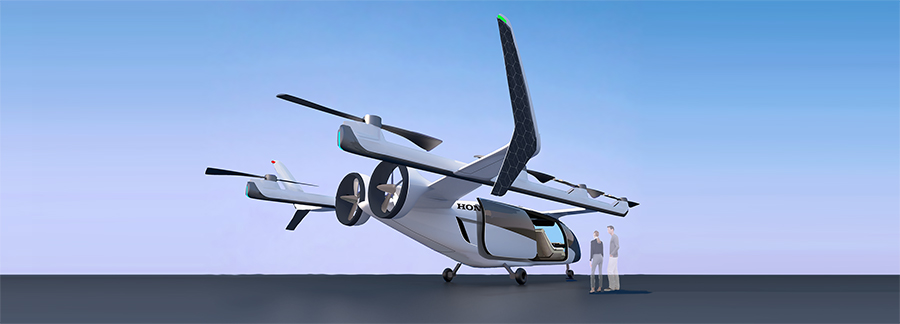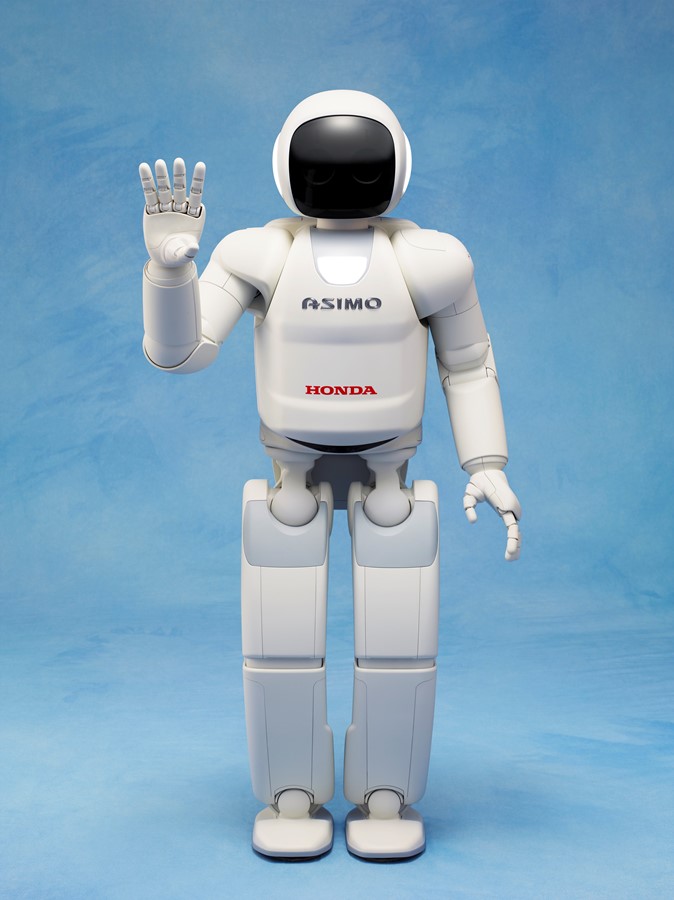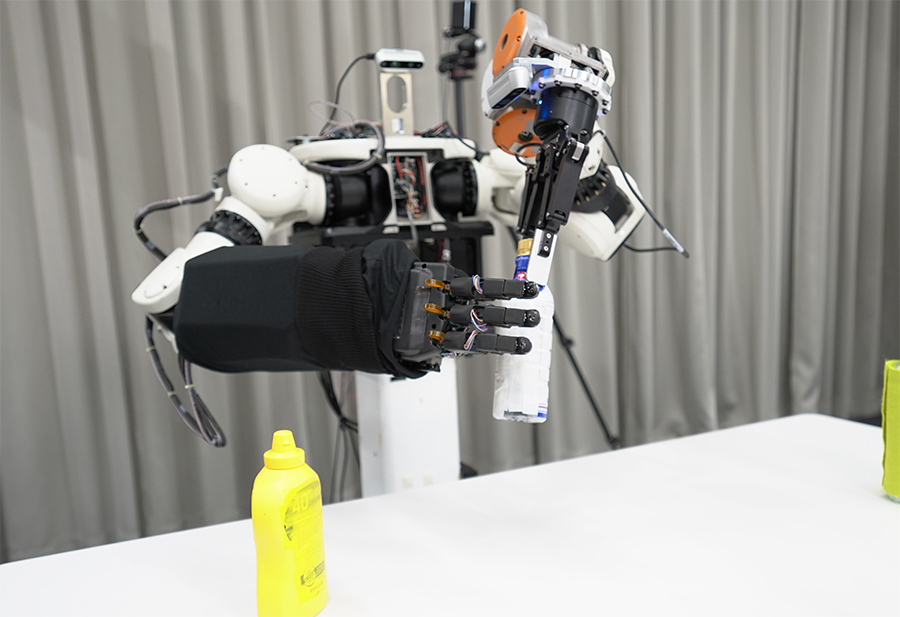Honda R&D Co., the company’s innovations arm, will be leading the efforts to produce an eVTOL (electric vertical take-off and landing) aircraft, an avatar robot, and space tech.
Honda’s eVTOL
First up, Honda’s foray into an entirely new dimension… up. The Japanese automaker didn’t disclose many details about its upcoming eVTOL. But what the company did divulge was that the aircraft’s electric motor will also be supported by a gas turbine hybrid power unit. This is a bit weird at first glance, as most of the eVTOLs being developed around the world are all-electric. Honda claims its decision to develop a hybrid aircraft is driven by the desire to increase the range featured in its design. The company says all-electric eVTOLs have limited battery capacity, good for intra-city (inside city) transportation, but not adequate for the inter-city (city-to-city) transportation it’s aiming for. Still, it does feel peculiar to focus on hybrid engines when the world needs to stop using fossil fuels NOW and because the longest eVTOL test flight to date managed 240 km on a single charge. That’s about the distance between Paris and Brussels for example. Honda plans to start prototype verification in 2023 and move to flight tests in 2025. Following that, it will decide whether it will proceed to commercialization.
Honda’s avatar robot
Perhaps you remember ASIMO, the company’s famous bi-pedal humanoid created in 2000. ASIMO may have been discontinued three years ago, but Honda will be using its research and technology to develop an avatar robot suitable for more practical applications. The avatar robots will allow you to perform tasks and experience things virtually without being there in person — just like having an extended second self… so maybe we can claim this a new ‘figurative dimension’ Honda is stretching into? The core of the new robot will be comprised of Honda’s original AI-supported remote control function and the multi-fingered robotic hand, which is currently under development. To date, the hand has the ability to “both delicately pick up a small object with the fingertips and the strength to open a tight jar lid, at the level of the human hand.” But the company’s also striving to improve its precision movements, such as grasping and manipulation. Honda expects to start testing the avatar robot before March 31, 2024, with the aim to put it into practical use in the 2030s. Honda envisions the robots will used for applications like remote surgery and lunar exploration — although I’d personally be more excited about their possible “snack getting” capabilities.
Honda’s space tech
Apart from the avatar robots, which are partly destined for the Moon, the company is eyeing to advance lunar development with a circulative renewable energy system. This system is designed to supply oxygen, hydrogen, and electricity for human stations and rovers on the Moon — extending the time people can live on the lunar surface. To do that, it leverages Honda’s existing fuel cell and high differential pressure water electrolysis technologies. On top of that, the Japanese firm is also developing small rockets to launch small low-earth orbit satellites. Most notably, Honda is conducting research on how to make its rockets reusable by enabling at least some of their components to land back on Earth after launch.
Why are automakers expanding into new technology fields?
All in all, automaker’s interest in robotics isn’t a new phenomenon, as it’s the key to launching autonomous vehicles. So it’s no wonder companies like Ford, Toyota, and Hyundai have begun diving deeper into the field. The same goes for the development of space technology. As cars become more and more software-centric, successful space tech could also be brought from the stars to Earth. And for this reason, Porsche has already invested in rocket startup Isar Aerospace. As far as eVTOLs go, their market is projected to grow from $162 million in 2025 to $411 million by 2030, reaching a 20.42% compound annual growth rate (CAGR) within those five years. So, yes, I’d say that Honda is making a valid investment. Not that they asked… Do EVs excite your electrons? Do ebikes get your wheels spinning? Do self-driving cars get you all charged up? Then you need the weekly SHIFT newsletter in your life. Click here to sign up.



